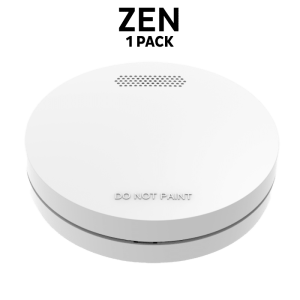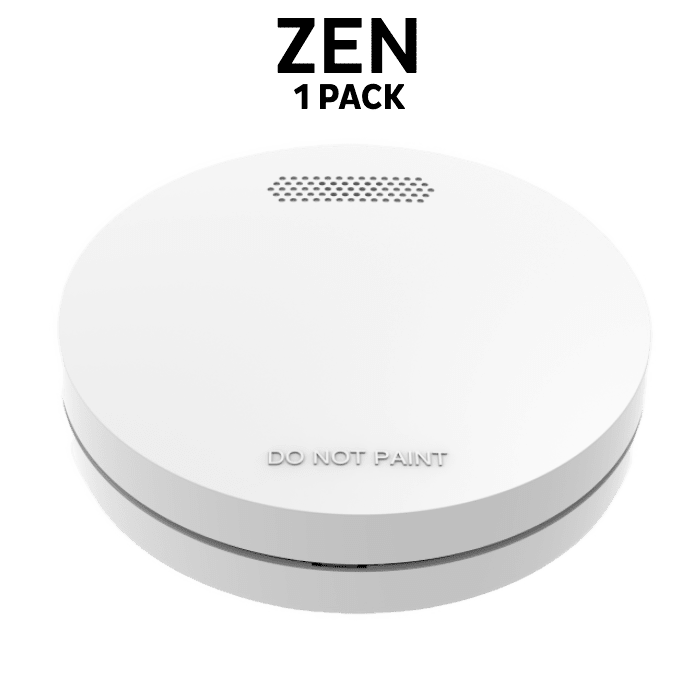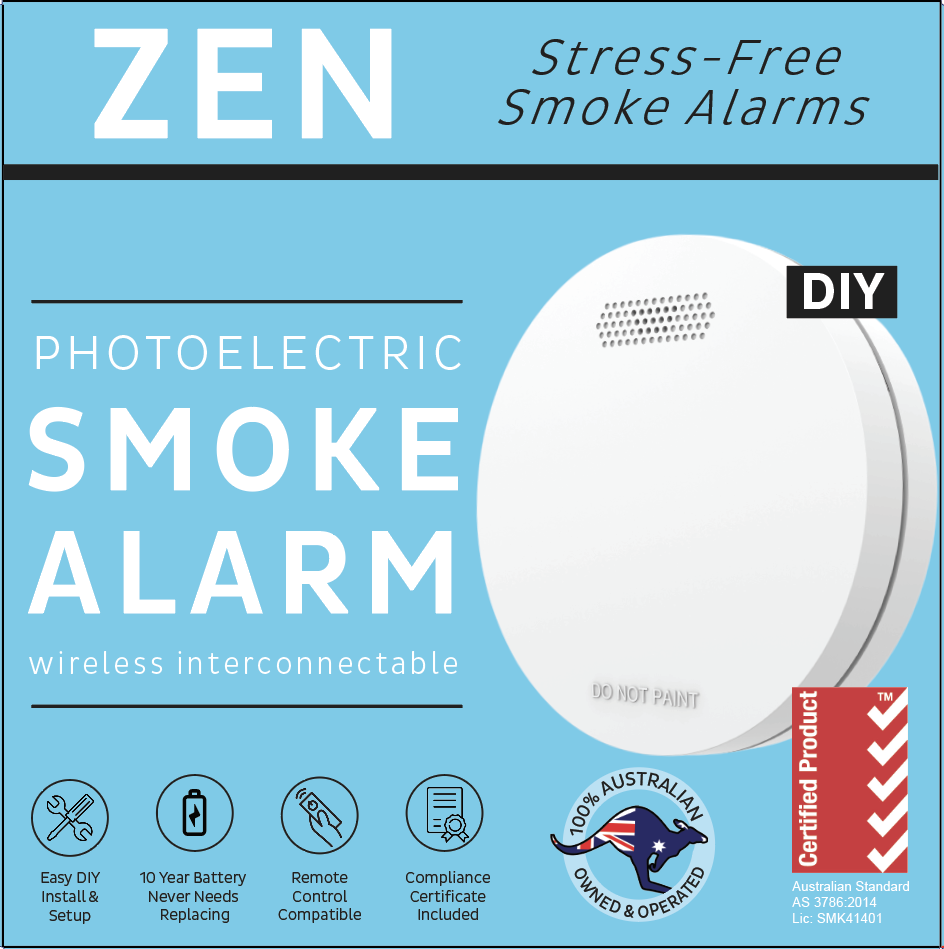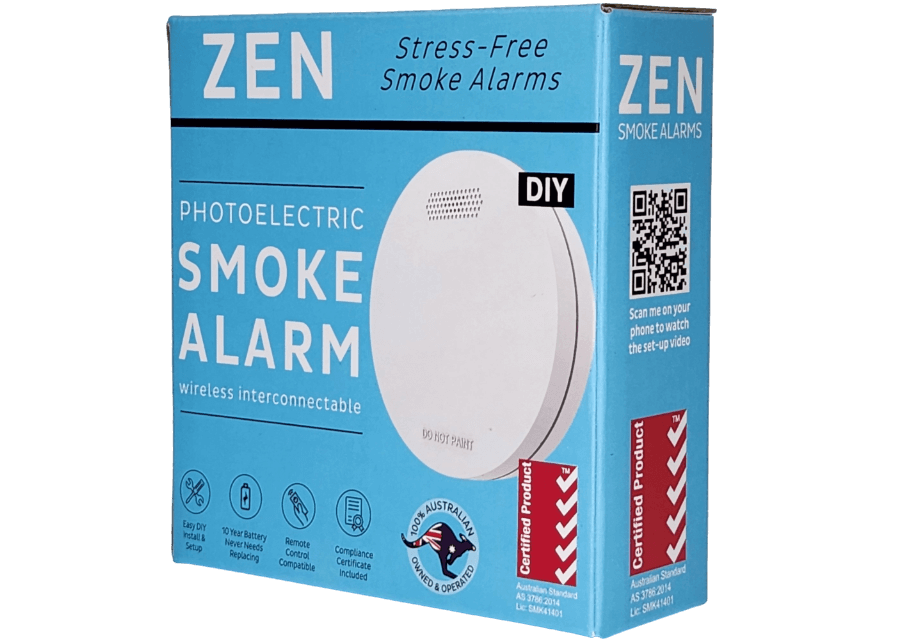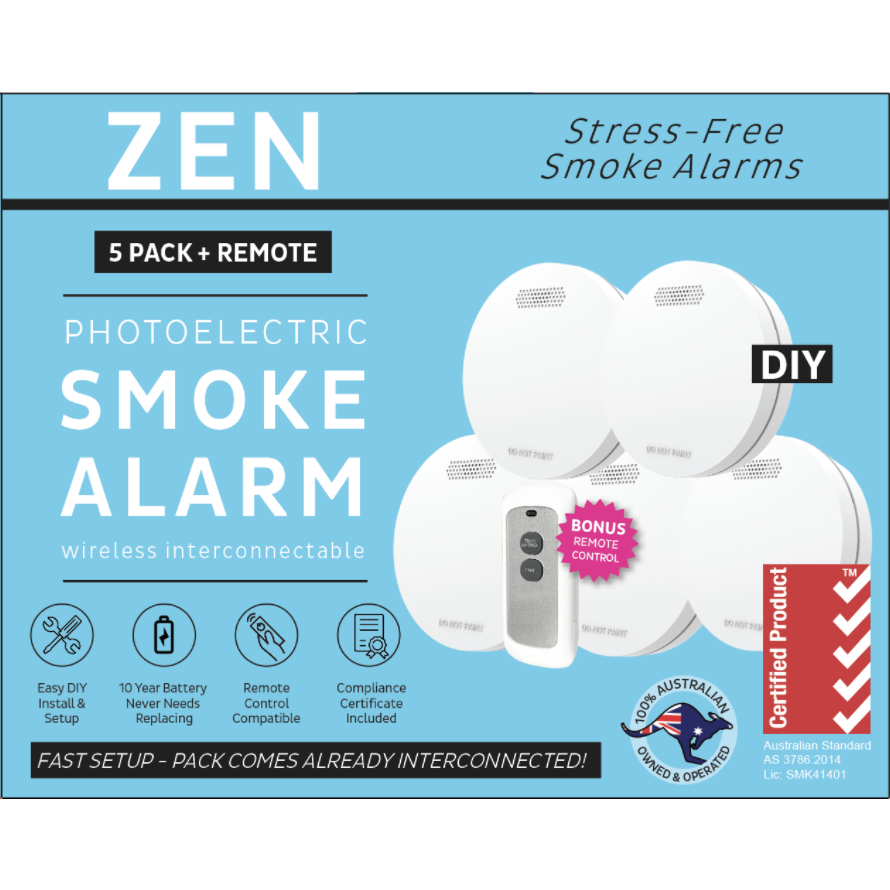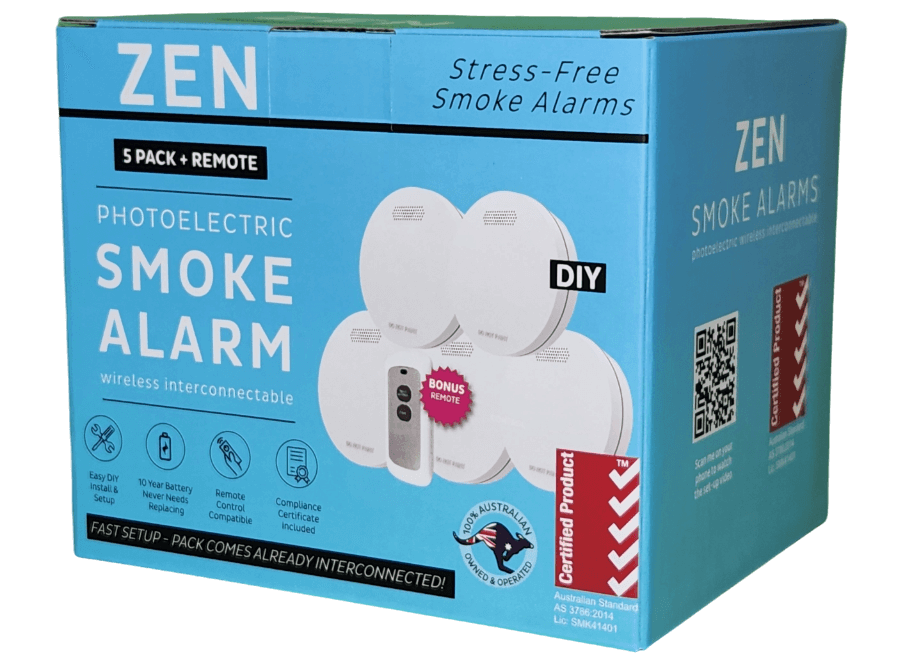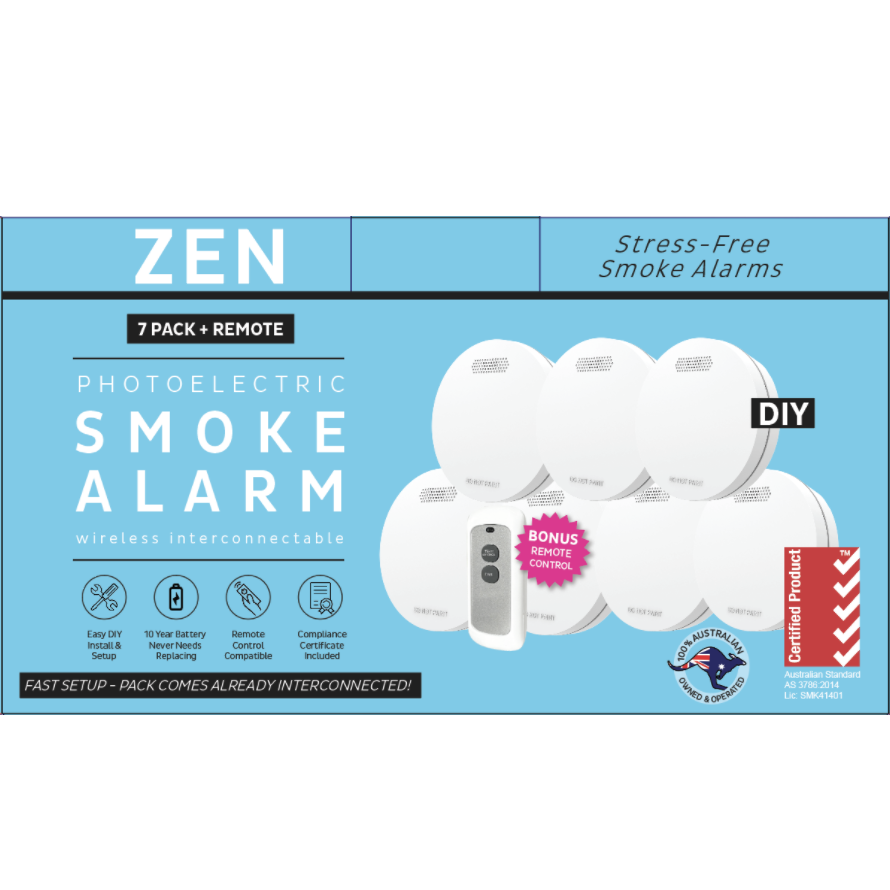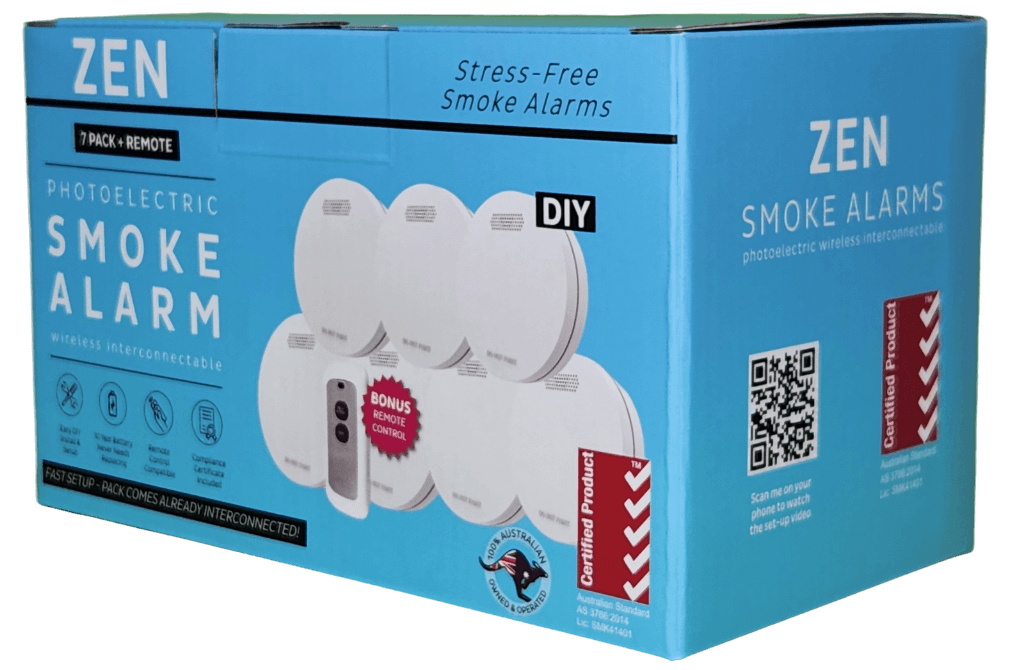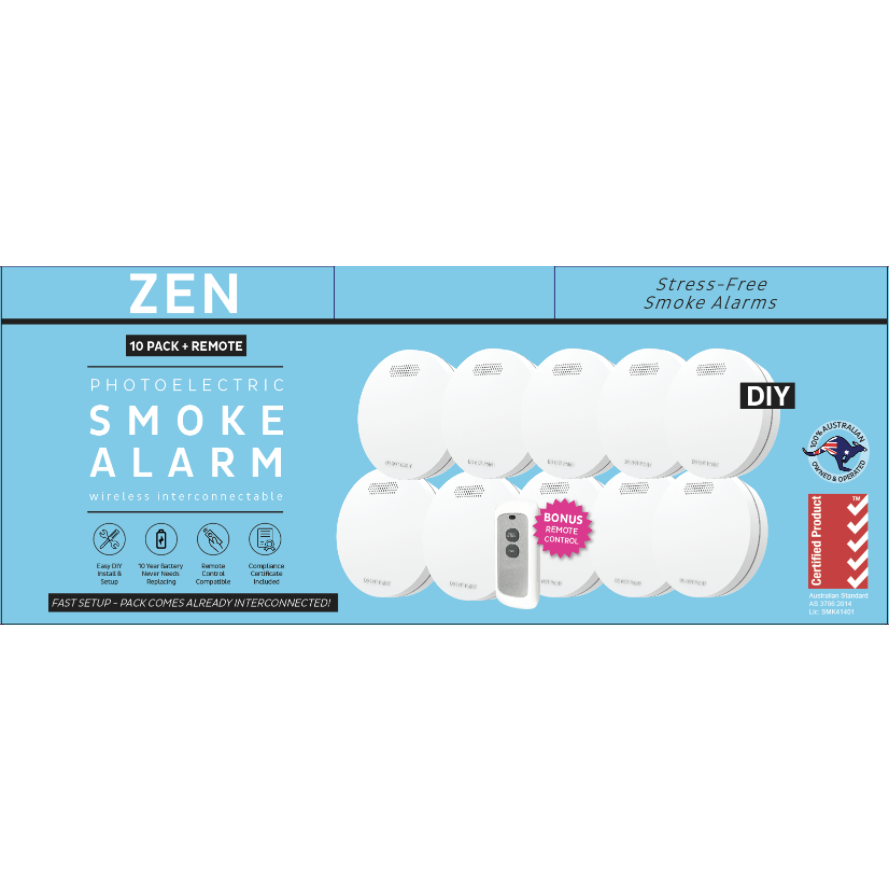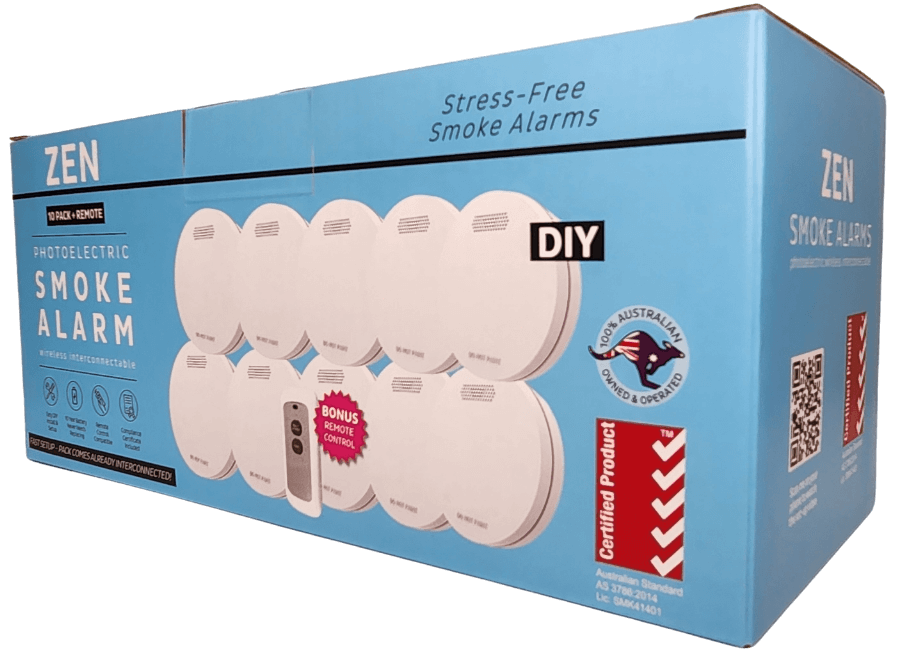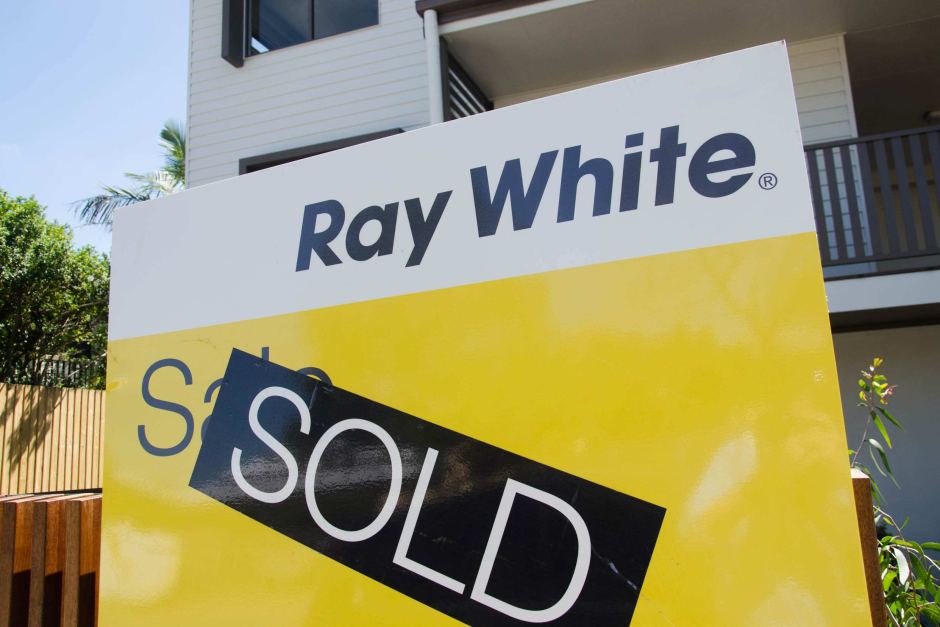We are the specialists in interconnected smoke alarms. You can be certain that the interconnected smoke detectors you buy from us are legally compliant to Australian Standard 3786:2014 – this standard encompasses the new legislation being rolled-out in Queensland.
ExcellentBased on 141 reviews
 Darren Cowie10/04/2024Great company to deal and excellent product and delivery time Would highly recommend
Darren Cowie10/04/2024Great company to deal and excellent product and delivery time Would highly recommend Liam Burke08/04/2024Easy online ordering, fast delivery in Brisbane and wonderful customer service. I would recommend Zen Photoelectric Smoke Alarms to all.
Liam Burke08/04/2024Easy online ordering, fast delivery in Brisbane and wonderful customer service. I would recommend Zen Photoelectric Smoke Alarms to all. Jay Connell07/04/2024Ordered on Wednesday and arrived on Thursday. Definitely high quality so have ordered more to change out all the old ones.
Jay Connell07/04/2024Ordered on Wednesday and arrived on Thursday. Definitely high quality so have ordered more to change out all the old ones. Alex Kologaras04/04/2024Very good product with a very competitive price. Easy to install. Had a small problem after a couple of years and had excellent service With instant replacement. It's been a pleasure doing business with this company.
Alex Kologaras04/04/2024Very good product with a very competitive price. Easy to install. Had a small problem after a couple of years and had excellent service With instant replacement. It's been a pleasure doing business with this company. Steve Wise12/03/2024Excellent product and even better service. Would not hesitate to recommend.
Steve Wise12/03/2024Excellent product and even better service. Would not hesitate to recommend. Thomas Jato04/03/2024Good quality products with excellent delivery time. Keep up the great work!
Thomas Jato04/03/2024Good quality products with excellent delivery time. Keep up the great work! Logan Farrell23/02/2024Ordered online and arrived in 2 days. Put them straight up on the ceiling in my rental. Easy.
Logan Farrell23/02/2024Ordered online and arrived in 2 days. Put them straight up on the ceiling in my rental. Easy. Kyle Laird20/02/2024When your Trying to figure out what smoke alarms to put in your new house. You can not look past these. Christian was amazing to deal with. Product is amazing and was so efficient to be delivered and easy to install high recommended for anyone in the search for a solid product big thanks to the team
Kyle Laird20/02/2024When your Trying to figure out what smoke alarms to put in your new house. You can not look past these. Christian was amazing to deal with. Product is amazing and was so efficient to be delivered and easy to install high recommended for anyone in the search for a solid product big thanks to the team Don Gittelson18/02/2024The smoke alarms arrived within days of placing the order. Top quality product, easy installation and set up. Highly recommended. . . . This is my second purchase from Christian, and once again he provided a great product which was delivered to my door within two days of ordering. Fast and efficient. Thank you once again. Highly recomended.
Don Gittelson18/02/2024The smoke alarms arrived within days of placing the order. Top quality product, easy installation and set up. Highly recommended. . . . This is my second purchase from Christian, and once again he provided a great product which was delivered to my door within two days of ordering. Fast and efficient. Thank you once again. Highly recomended.
Shop WIRELESS Interconnected Smoke Alarms
-
Featured
Wireless Interconnectable Photoelectric Smoke Alarm with 10 year battery x 1 pack
Model: ZEN-10-WIP- AU Standard Approved (AS 3786:2014)
- 10 year battery never needs replacing
- Easy DIY install (no wiring required)
- Complies with QLD smoke alarm laws
- FREE SHIPPING for all orders over $100
Sale price – hurry ends soon!$99.00$69.95 Buy Now -
Featured
Wireless Interconnected Photoelectric Smoke Alarm with 10 year battery x 5 pack + Bonus Remote
Model: ZEN-10-WIP- Fast setup – pack comes interconnected
- Bonus remote control – easy hush & test
- AU Standard Approved (AS 3786:2014)
- 10 year battery never needs replacing
- Complies with QLD smoke alarm laws
- Easy DIY install (no wiring required)
- FREE SHIPPING!
Sale price – hurry ends soon!$469.00$349.95 Buy Now -
Featured
Wireless Interconnected Photoelectric Smoke Alarm with 10 year battery x 7 pack + Bonus Remote
Model: ZEN-10-WIP- Fast setup – pack comes interconnected
- Bonus remote control – easy hush & test
- AU Standard Approved (AS 3786:2014)
- 10 year battery never needs replacing
- Complies with QLD smoke alarm laws
- Easy DIY install (no wiring required)
- FREE SHIPPING!
Sale price – hurry ends soon!$659.00$489.95 Buy Now -
Featured
Wireless Interconnected Photoelectric Smoke Alarm with 10 year battery x 10 pack + Bonus Remote
Model: ZEN-10-WIP- Fast setup – pack comes interconnected
- Bonus remote control – easy hush & test
- AU Standard Approved (AS 3786:2014)
- 10 year battery never needs replacing
- Complies with QLD smoke alarm laws
- Easy DIY install (no wiring required)
- FREE SHIPPING!
Sale price – hurry ends soon!$939.00$699.95 Buy Now
Why buy our smoke alarms?
 G’day! My name is Christian from ZEN Smoke Alarms.
G’day! My name is Christian from ZEN Smoke Alarms.
When you call 0478 596 402 you will always be speaking with me – a smoke alarm expert that is knowledgeable, friendly, and who genuinely wants to help you!
ZEN smoke alarms are perfect for home owners, landlords and property sellers who need a stress-free and affordable smoke alarm solution. It is these qualities which has seen ZEN Smoke Alarms become Australia’s most popular and trusted online smoke alarm retailer.
But don’t just take my word for it, our reputation speaks for itself! See what others are saying with over 140 Google 5-star reviews attesting to the reliability of our products and the exceptional customer service we provide. ![]()
Key features of our wireless interconnected photoelectric smoke alarms
- Wireless interconnected photoelectric smoke alarm – type preferred by fire authorities in Australia
- Australian Standard Compliant (AS 3786:2014)
- Easy DIY setup (no wiring required)
- Quick wireless interconnect with up to 30 other alarms
- 10 year lithium battery – no need to replace for the lifespan of the alarm
- Large easy press hush button to silence nuisance alarms
- Loud 85dB warning alarm to ensure alarm is heard
- Compliance with Queensland smoke alarm laws
- FREE shipping Australia wide for orders over $100
What are wireless interconnected photoelectric smoke alarms?
There are two parts to this question – the first is answering what does ‘interconnected‘ mean and the second is answering what does ‘photoelectric‘ mean?
‘Interconnected‘ simply means that our smoke alarms can be wirelessly paired together so that they are all linked within the same ‘network’ (without the need to physically install cables or hard wiring). When one alarm detects smoke within a building, then all smoke alarms wirelessly paired together within the same network will also initiate their audible alarm. The advantages of interconnected smoke alarms are that they can provide an increased early warning for occupants, particularly in multi-storey and/or multi-bedroom dwellings.
Older conventional smoke alarms typically operate as single unit, stand-alone devices. If a conventional smoke alarm sensed smoke on the ground floor of a building, it may activate, but any other smoke alarms on upper floors would not activate until smoke had physically entered their same air space – by this time it could be too late to initiate an effective emergency response as the fire has also spread to the upper floor.
Interconnected smoke alarms are linked/paired together using Radio Frequency (RF) technology so do not need a home WiFi internet connection. The range for interconnection is 25 metres making it ideal for residential homes, apartments and units.
‘Photoelectric‘ refers to the method of smoke detection and uses light to detect smoke particles. A Light Emitting Diode (LED) within the smoke alarm detects the presence of smoke particles by scattering the light beam causing a light sensitive sensor within the alarm to activate.
Older conventional smoke alarms use radioactive ionization as the process by which they detect smoke particles. Ionization smoke alarms are less adept at detecting smoke from smouldering flames which is common of most house fires.
If you are unsure what type of smoke alarm you have – take a look on the back of it. If it has the tri-foil radioactive symbol like this image below it means you have an ionization smoke alarm and should consider replacing it with the photoelectric type as soon as possible.

Because our smoke alarms use photoelectric technology they are more adept at detecting smoke in the early smouldering stage. For this reason photoelectric smoke alarms are the preferred type of alarm as ionization smoke alarms are being phased out nationwide.
Our wireless interconnected photoelectric smoke alarms are also powered by a long life 10-year lithium ion battery. The battery is sealed inside the unit and is non-replaceable. At the end of the 10-year battery life span, the entire smoke alarm is replaced for a new one.
Older conventional smoke alarms are often powered by a 9v replaceable battery. When the battery life becomes low the smoke alarm initiates a loud periodic ‘chirp’ which continues until the battery is replaced. As seen in the past with tragic consequences, people can deliberately remove the battery to silence the annoying ‘chirp’ sound – this disables the alarm and renders it useless for smoke detection.
How do wireless interconnected smoke alarms work?
Wireless interconnected photoelectric smoke alarms work by using a radio frequency signal to communicate, this eliminates the need to run hard wiring between each alarm.
Simply put, when one alarm detects smoke, it will wirelessly ‘talk’ to all other alarms within the same network using the RF signal, so that all activate simultaneously (usually within 10 seconds of the initial detection). Interconnected smoke alarms can increase the early warning and response time for occupants, particularly in multi-story dwellings.
Our smoke alarms are not affected by other household RF devices (for example, wireless smoke alarms in adjoining properties) as the technology is purposely designed to eliminate any such interference during the unique network pairing process.
TV or A/C remote controls do not interfere with our alarms either as these items use different technology (infrared instead of radio frequency).
How do I install wireless interconnected smoke alarms?
This will explain how to physically install your smoke alarms to the ceiling.
One benefit from using wireless interconnected battery powered smoke alarms is that you can install them yourself without the need for an electrician or other tradesperson.
Our smoke alarms can be installed by using the anchor and screws supplied with the alarm:
Note: Before installing any smoke alarms please review the ‘RECOMMENDED PLACEMENT’ section for guidance.
HOW TO INSTALL:
STEP 1: Gently twist the mounting bracket to remove it from the back of the alarm.
STEP 2: Locate the mounting bracket in your chosen position on the ceiling. Use a pencil to mark the location of the two mounting bracket slots on the ceiling.
STEP 3: Use a 5mm drill bit to drill a pilot hole at each location marked on the ceiling. Now insert the anchor plugs and use the two screws to attach the mounting bracket to the chosen position. Don’t over-tighten the screws as this may distort the mounting bracket.
STEP 4: Attach the smoke alarm to the mounting bracket and turn clockwise to lock it into place. Test the smoke alarm by pressing the dual test / hush button.
How do I know if my wireless smoke alarms are interconnected?
It is almost impossible to tell if smoke alarms are interconnected just by looking at them. The best way to ascertain if your smoke alarms are interconnected is by testing them! Our alarms come with a dual test / hush button to make this easy.
Simply press the button to test your alarm – if all alarms within the same network activate then it means they are successfully interconnected. Alternatively, just press the test button on the optional remote control device. Note when testing alarms it may take up to 10 seconds for all alarms to activate – this is normal.
For more information on interconnecting / pairing your smoke alarms please go here: Setup & Install
Can different brands of smoke detectors be interconnected?
No. We do not recommend attempting to interconnect different brands of smoke detectors onto the same network. The set-up and pairing process is different for each smoke alarm brand and this could introduce communication issues when establishing the network. Whilst some smoke alarm brands may share a common radio frequency, the bandwidth will always vary which may cause functionality issues, or simply not work at all.
As with any life saving appliance, adhere to the manufacturer’s recommendations and don’t try to interconnect different brands of smoke alarms onto the same network.
Please see the bottom of our home page for more Frequently Asked Questions (FAQ).
Where should these smoke alarms be placed?
The Queensland Building Fire Safety Regulation 2008 includes specific requirements about the number of wireless interconnected photoelectric smoke alarms and their placement within a dwelling.
To make things simple we have summarised the legal requirements in easy-to-read language on this website. No confusing legal jargon here!
Legislative requirements for wireless smoke alarm placement also exist in other Australian states, although Queensland could be considered as ‘best practice’ because it currently has the most stringent smoke alarm legislation within Australia.
Queensland law states that smoke alarms must be placed at the following locations;
Wireless interconnected photoelectric smoke alarms must be installed on each storey:
- In each bedroom; and,
- In hallways which connect bedrooms and the rest of the dwelling; or
- If there is no hallway, between the bedrooms and other parts of the storey; and
- If there are no bedrooms on a storey at least one smoke alarm must be installed in the most likely path of travel to exit the dwelling.
Additionally, the legislation states;
Where practicable smoke alarms must be placed on the ceiling. Smoke alarms must not be placed:
- Within 300mm of a corner of a ceiling and a wall,
- Within 300mm of a light fitting,
- Within 400mm of an air-conditioning vent,
- Within 400mm of the blades of a ceiling fan.
There are special requirements for stairways, sloping ceilings, and ceilings with exposed beams. Specific requirements are further explained in the Building Fire Safety Regulation 2008.
The example floorplan below was developed by the Queensland Fire and Emergency Services and depicts required smoke alarm locations within a building.
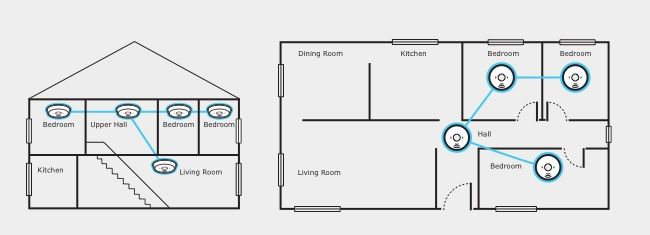
Stress Free Install…
Our ZEN bundle packs come pre-interconnected, turn them on and away you go!STEP 1: Open the box
STEP 2: Turn on the alarms
STEP 3: Ready to go
Have you considered all the implications of Queensland’s smoke alarm laws on your house sale?
Do you know whether a smoke alarm compliance certificate is mandatory (or not), and how that can impact the settlement process?
For a property transaction to remain stress-free and devoid of complications it is important to familiarise yourself with the nuances of QLD smoke alarm legislation..
Frequently Asked Questions
Yes! Whilst our ZEN bundle packs will arrive to you pre-interconnected as one group – all alarms in a bundle pack can be split up. For example, you may want to split a 10 pack bundle into two separate groups by having 6 alarms in one property and 4 alarms in another property (with each group functioning independently of the other). You can even purchase extra individual alarms to add into a bundle pack group and make it bigger. It’s entirely flexible and up to you to decide.
Refer to our setup & install page for more information.
No, we do not have a traditional ‘bricks and mortar’ shopfront. Our listed address is an administration office only and we do not keep stock at this location. Maintaining a 100% online presence allows us to keep overheads as low as possible – this is reflected in our smoke alarm pricing.
If you require smoke alarms urgently and/or time critical please let us know prior to placing your order and we can send it express post at no extra cost!
The number of smoke alarms required is relative to the size, floor layout and what state the dwelling is located in. QLD law states that a smoke alarm must be installed;
- on each storey
- in each bedroom
- in hallways that connect bedrooms and the rest of the dwelling
- if there is no hallway, between the bedroom and other parts of the storey
- if there are no bedrooms on a storey, at least one smoke alarm must be installed in the most likely path of travel to exit the dwelling.
The example floorplan below was developed by the Queensland Fire and Emergency Services (QFES) and depicts required smoke alarm locations within a dwelling – use this as a guide for determining your own requirements.
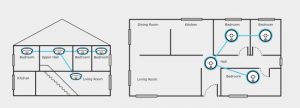
The ‘recommended placement’ section of our website also contains more information.
No, as our ZEN wireless interconnected smoke alarms have a non-removeable 10-year battery (not hardwired to 240V mains power) they can be easily installed by yourself and do not require an electrician.
Please note however if you purchase one of our Red 240V hardwired smoke alarms then yes it will need to be installed by a licensed electrician.
No. The interconnection is wireless and uses a radio frequency so that the alarms must be uniquely paired to one another. All alarms in one property are paired with a ‘master’ alarm, which is distinct from a ‘master’ alarm on any adjoining property.
Please refer to the Real Estate Institute of Queensland’s (REIQ) fact sheet below.
Our blog post also contains more information about smoke alarm compliance when selling your property in QLD.
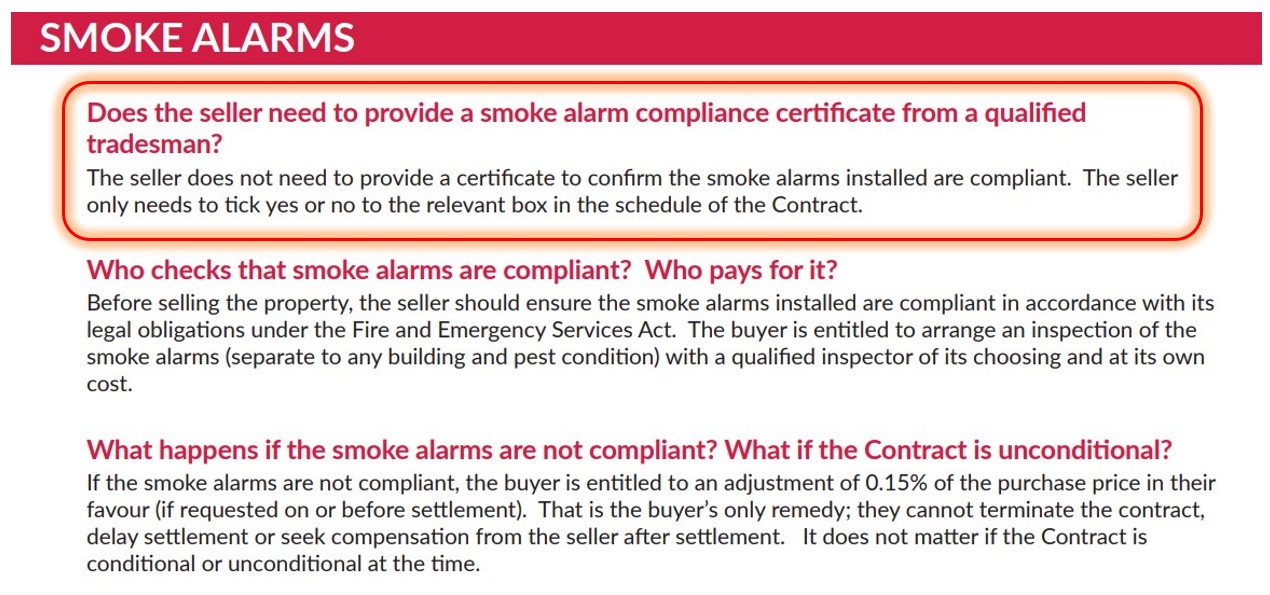
Legislation states that if an existing 240v hardwired alarm is to be replaced, then it must be replaced with a 240v hardwired photoelectric smoke alarm.
The National Construction Code (NCC) also states that any new dwellings being constructed or being substantially renovated must have 240v hardwired photoelectric smoke alarms installed.
Both brands comply to Australian Standard 3786:2014 and both brands are very good!
Red smoke alarms also manufacture a 240V hardwired (mains powered) smoke alarm – this is useful for some people who require a combination of both types in their property (QLD legislation says any existing hardwired smoke alarms must be replaced with hardwired).
Red smoke alarms are not compatible with ZEN smoke alarms, and vice versa (i.e. different brands cannot be interconnected together).
Some insurance providers can decline to quote your property if you don’t fulfil their underwriting criteria when it comes to fire protection. It is always recommended to install interconnected photoelectric smoke alarms and check with your insurance provider or insurance broker to make sure you meet the necessary requirements.
QLD Smoke Alarm Blog Posts
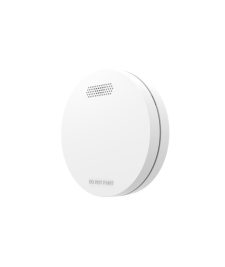
QLD’s Smoke Alarm Laws Exposed: Hardwired vs. Battery Powered – Are You Breaking the Rules?
Smoke alarm regulations vary slightly across different states and [...]
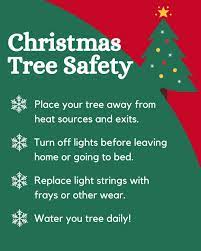
Queensland’s Recipe for a Sizzling Christmas Without the Burn! #InterconnectedSmokeAlarms #QLDChristmas2023
As the Queensland 2023 festive season approaches, warmer [...]
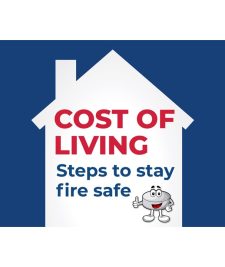
Australia’s Cost of Living Crisis and it’s Impact on Queensland Interconnected Smoke Alarms
The rising costs of essentials like housing, food, and soaring [...]
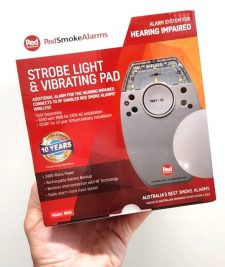
Red Smoke Alarms Strobe Light and Vibrating Pad: Ensuring Fire Safety for All
In every home, fire safety is a high priority. Smoke alarms have long [...]

Spring into Safety: Don’t Forget to Check Your Smoke Alarms as Queensland Warms Up!
As the winter chill gradually gives way to the warmth of a Queensland [...]
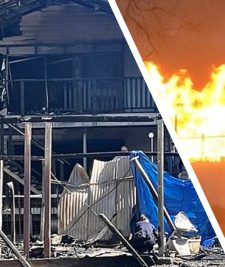
Queensland’s Russell Island House Fire Tragedy – Why Didn’t the Smoke Detectors Go Off?
Queensland was rocked by another devastating house fire tragedy [...]
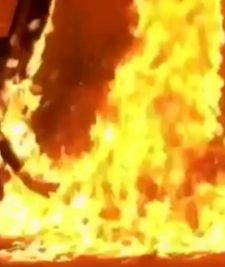
The Fiery Truth: Lithium-Ion Battery Dangers in Queensland
Australia has experienced a surge in the adoption of lithium-ion [...]
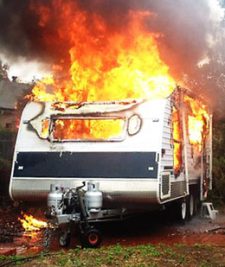
Fire tragedy prompts review of QLD caravan smoke alarm legislation
A recent fatal caravan fire in QLD has again sparked demands for a [...]
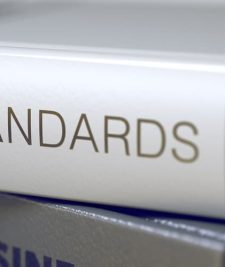
Australia’s smoke alarm standard 3786:2014 is superseded – what does new Australian Standard 3786:2023 mean for home owners?
A new Australian Standard for smoke alarms, Australian Standard [...]

Sleep Soundly Knowing Your Photoelectric Smoke Alarm is Manufactured in an ISO 9001 Quality Accredited Facility
Smoke alarms are essential safety devices that detect the presence of [...]
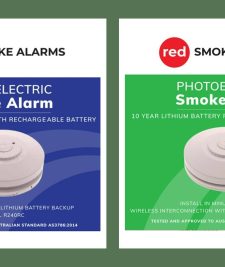
Hard Wired Smoke Detectors vs Battery Powered – Which One Is Correct For Me?
Whilst battery powered smoke detectors* are easy for homeowners to [...]
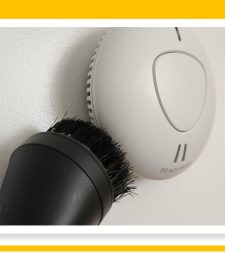
Don’t Wait Until It’s Too Late: Why Neglecting Your Smoke Alarm Could Cost You Everything!
Interconnected Photoelectric Smoke Alarms are one of the most [...]
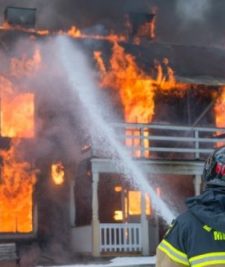
Must Watch Videos
Photoelectric Smoke Alarms – New QLD Legislation – [...]
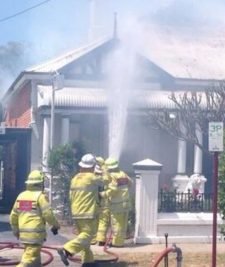
What do the West Australian smoke alarm laws actually state?
The principal smoke alarm laws in Western Australia consist of; [...]
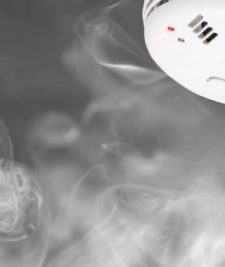
What do the Northern Territory Smoke alarm laws actually state?
The governing piece of smoke alarm legislation in the Northern [...]
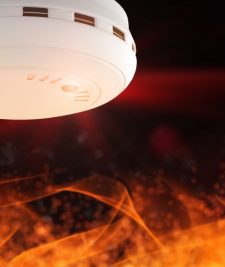
What do the South Australian smoke alarm laws actually state?
Just like most other Australian states and Territories, South [...]
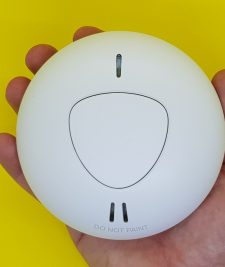
Is your smoke alarm really Australian Standard compliant?
Before buying a smoke alarm you should do your due diligence to [...]
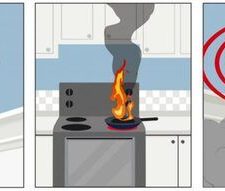
What do the Victorian smoke alarm laws actually state?
Smoke alarm rules and regulations in Victoria are derived primarily [...]
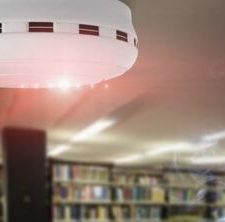
What do the NSW smoke alarm laws actually state?
On 1 May 2006, the NSW Government introduced new legislation [...]
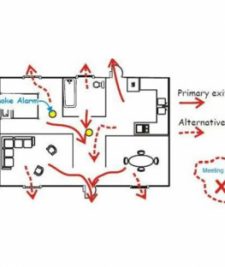
Tips you absolutely must know when developing a home fire safety plan!
There is no point waiting until a fire occurs before figuring out [...]
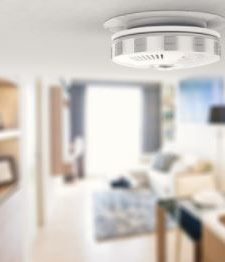
How are they different to other smoke alarms?
There are three important differences between our wireless [...]
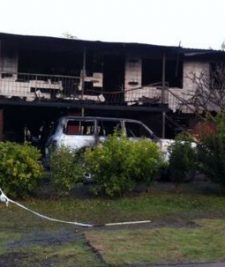
Why have these laws been introduced?
These new laws were introduced in Queensland due to several house [...]

What are the new QLD smoke alarm laws?
The two key pieces of legislation in QLD are called the Fire and [...]
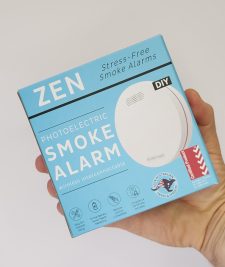
Smoke alarm secrets and the Australian Standard
All smoke alarms sold within Australia must comply to Australian [...]

Very alarming! – why is your smoke alarm beeping for no reason?
Nothing is more annoying than a smoke alarm going off for no reason [...]
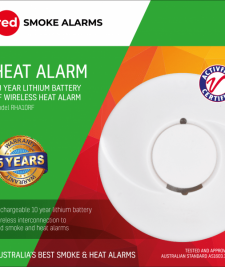
Heat alarms and heat detectors – important facts you absolutely must know!
What is a heat alarm and what does it do? As the name suggests, heat [...]
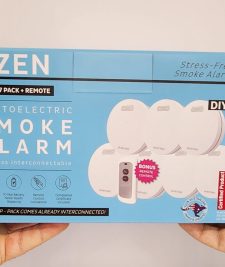
How to install our ZEN smoke alarms onto your ceiling – DIY is so easy and save big $$$
Ever wondered how to physically attach our ZEN smoke alarms onto your [...]

I’m selling my property in QLD – do I need to provide a smoke alarm compliance certificate?
This is a common question, and the answer depends on what type of [...]
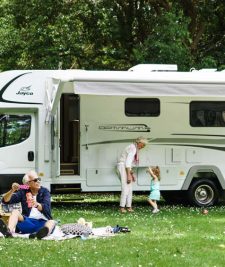
Smoke Alarms in Caravans & Campervans
Australians are renowned for their love of the great outdoors – [...]

